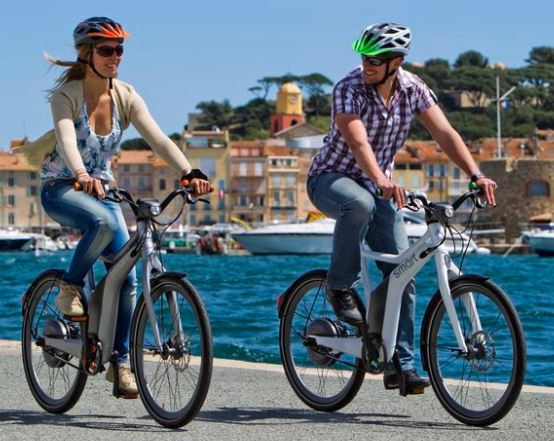By Adam Bakonis, Product Manager at Mercury Insurance
Americans have a new infatuation, the electric bicycle, and some come in with a top speed of 70 miles per hour (mph), fast enough to be on most major highways and freeways. Electric bicycles have become a popular alternative vehicle for today’s micro-mobility movement and since the COVID-19 pandemic their numbers have skyrocketed. In fact, sales of electric bicycles in the U.S. totaled $1.3 billion in 2022, a 33% increase over the previous year, according to a report from the National Bicycle Dealers Association. Sales are estimated to be more than $1.6 billion in 2023.
Let’s take a look at some of the top questions consumers have related to electric bicycles.
What is an electric bike?
An electric bicycle, commonly referred to as an e-bike, is a battery-powered assisted two-wheel vehicle that generally works with pedals or a throttle. It takes a traditional bicycle and gives it a boost of power via the electric motor. Riders pedal as they would on a normal bicycle and when faced with tough terrain such as a steep hill or carrying a heavy load, the motor assists the pedaling so the rider doesn’t get exhausted riding up it. The rider controls the speed with the pedals, really feeling the easy of acceleration and extra speed at their feet.
Some e-bikes come with a touch button throttle to control the amount of power put to the wheels. This type of an e-bike is in an entirely different category from pedal-powered ones and are also illegal in certain cities.
What kinds of e-bikes are available?
E-bikes come in all shapes and sizes. Not only are there different ways an electric bicycle administers power, but they are also designed for nearly every type of riding situation, including cargo, commuter, recreational, hardtail, full-suspension mountain, performance road and fat tire. Some cargo e-bikes for example, can carry up to 400 pounds while traveling at speeds of 15 mph. When choosing one, it’s best to determine how it’ll be mainly used and the road type it will be rode on.
Is an e-bike heavy?
When purchasing a traditional bicycle, an instinct is to lift it up to see how heavy it might be, however, doing this will shock future e-bike owners. With the addition of the electric components including motor, battery and harnesses, and not to mention the reinforced frame to handle the 20 pounds of weight that is added to the bike, they come in heavier than expected. The additional weight however, has little effect on how it rides as engineers have figured out how and where to place the additional pounds so handling isn’t affected.
How fast are e-bikes?
With the added boost of the electric motor, e-bikes have the capability of traveling up to speeds of 70 mph, however, the average top speed is 15 mph, which is twice as fast as the average speed for a traditional bicyclist (7 mph). The maximum speed by law for an e-bike is 15 mph. Anything faster can be categorized as a motorbike or motorcycle.
E-bikes are capable of going much faster than 15 mph, as the rider can boost the speed by pedaling and taking speeds up to 30 mph or more in the motor assistance mode.
How much is an e-bike?
If you’re considering purchasing an e-bike know this, it’s a significant investment. Prices will vary widely. A high-quality entry-level electric bicycle typically costs upwards of a $1,000 while more extravagant e-bikes can run as much as $12,000. In the middle are your average value e-bikes at about $3,000.
What is electric bike insurance? Does a standard auto, homeowners or renters policy cover e-bikes?
Electric bikes generally have limited to no coverage under a standard homeowners or renters insurance policy because they’re categorized as a motorized vehicle and that creates a gap in protection. A standard auto will generally not offer coverage for e-bikes either as e-bikes cannot be listed as vehicles on such policies. Whether it was stolen or damaged, replacement or repair costs would have to come out of the owner’s pocket. Additionally, if the operator crashes and causes bodily injuries to them self or third-parties resulting in medical costs and other damages, that too would have to be paid by the operator and/or owner of the e-bike.
If you own and ride an e-bike, you’ll need a policy designed for e-bikes to be covered, which may include an e-bike insurance policy or, in some cases, a motorcycle policy. Licensing requirements may vary by state* – you should check state and local regulations – but even if the law does not have a financial responsibility (e.g., insurance) requirement for e-bikes, you are still legally liable for damages you may cause while operating one. In the case of minors, their parents may be liable for such damages.
*License not required in 44 states, including California
This article was originally published here by our partner Mercury Insurance.
To learn more about e-bike insurance contact Tague Insurance Agency.
Tague Insurance Agency is an independently owned and locally operated insurance agency in Vista, California. We help people across the state find affordable and reliable insurance products from a variety of trusted carriers. As an independent agency, we can help you find the perfect combination of coverage and price to fit your unique needs.
What Does Independent Mean?
“Independent” means we’re not tied to any one insurance carrier. In other words, we can research rates and coverage options from several top insurance companies to find the best policies for you. We do the shopping and comparing to save you time and money!
How to Get in Touch
We invite you to submit a free online quote request or call us at 760-509-4667 to review coverage options for auto, home, life, health, business, and more. We provide free, no hassle and no obligation insurance quotes to help you make an informed decision.


















